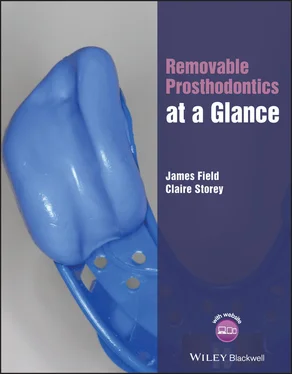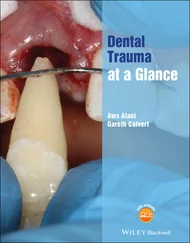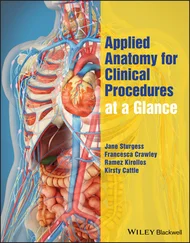A large discrepancy between the current intercuspal position and the retruded arc of closure
Problems or difficulties with the patient's ability to sit upright in a dental chair
It is generally accepted that an atrophic ridge means that the prognosis will be affected, especially on the lower arch. In these cases, more attention needs to be paid to accurate extensions, functional border moulding and tooth position. However, it is often assumed that high and rounded ridges means a high chance of ‘success’ – but be careful – patients with ridges of this type often present with pain on the crest of the ridge. Ridges should also be inspected for the height of the muscle attachments – are they near the crest of the ridge (which means you need to be very careful to accommodate them in function) or are they low or absent? Also look for significant ridge undercuts, which may mean that you need to consider a specific path of insertion, or even pre-prosthetic surgery.
Poor communication with the laboratory means that technical aspects may be suboptimal. Make it clear on your communications to the laboratory why you are making the prostheses and ask the technician to contact you if they encounter any problems or suboptimal clinical work.
Ultimately, success is compromised by poor communication between operator, patient and technician – be honest about your likelihood of success and document the discussions carefully in the patient notes.
8 Accessibility and operator position

Successful clinical stages during prosthetic treatment are not just dependent on your technical ability. The previous chapter talked about how limited intraoral access, or the inability of the patient to sit in your dental chair, are risk factors for failure. However, it is equally as important to consider your posture and operating position .
Posture and operating position
It is easy to forget your posture when you are concentrating on a clinical stage. Some types of saddle seat, or wearing loupes, can help to reinforce a good posture – however, with the exception of tooth preparations, we would recommend carrying out each prosthodontic clinic stage in a standing position.
Maintaining a dynamic position around the patient means that you are less likely to strain your neck or back, and more likely to move into an appropriate position. This will ensure that your back and neck will remain healthy, and your operative dental career will be more sustainable! Aside from your own health, it is also more comfortable for patients to have impressions taken when they are sitting upright rather than in the supine position.
Move yourself, and the patient
A dynamic operating position means that you are able to move yourself around the patient, but that you are also moving the patient into an appropriate position. Typically as dentists we are good at neither, often staying around the 12 o'clock operator position. It is very important to make sure that you are comfortable first, before considering how you can then move the patient to optimise your field of view or operative control. This may mean moving the patient up or down in the chair, retroclining the patient or simply turning their head to either side. Ensure that wherever possible you maintain a straight back, straight neck and direct vision of the operative area.
Typically we would recommend operating from behind the patient when working on impressions for the upper arch (Figure 8.1). You should stand with the top of the patient's head at the level of your non-dominant elbow. Do not stand immediately behind the patient – instead, imagine that you are holding the patient's head like a rugby ball, or that you are getting them into a ‘head lock’ – so slightly to the side. When your hands meet in front of the patient's mouth, your hands should be lower than your elbows. Imagine water running down your arms, and off your little fingertips – the ‘first position’ in ballet. This position serves a multitude of functions:
Ensures that you are able to stand with a straight back
Ensures stability of posture so that you can manipulate the patient confidently and securely
Allows you to support the patient's head with your non-dominant arm
Gives you control of the mandibular lower border, should you need to encourage the patient into a particular position
Gives you control of the perioral area (which is especially useful if the patient has a habit of raising their hands to reach for their mouth)
Allows you to palpate and inspect the full upper denture-bearing area
Facilitates the correct manipulation and seating of trays because of a greater range of wrist movements (trying to fully seat an upper tray, posterior aspect first, from in front of the patient is incredibly difficult)
In most cases we would recommend making impressions of the lower arch from in front of the patient, with the patient sitting upright (Figure 8.2). Most dental chairs become narrower half-way down, and this is a good place to position yourself. Ensure you have a straight back, rather than allowing yourself to bend over forwards. One of the aspects of lower special trays that is most poorly extended and adapted is the labial extension. This is often because operators are sitting behind the patient when assessing this area, which results in inappropriate manipulation of the lower lip. Once again, your arms should not be raised – instead, they should adopt a similar position to that described for an upper arch position. Dental chairs tend to need to be lowered considerably to achieve this position. However, it is also useful for the following reasons:
Facilitates the correct manipulation and seating of trays because of a greater range of wrist movements
Field of view is not blocked by the facial anatomy, which causes operators behind the patient to lean forwards
Encourages a straight back
Improves interarch visibility for assessing occlusal relationships, facial aesthetics and speech
Control of the prostheses and trays
It is very important that you take control of inserting and removing impression trays, and the patient's prostheses. When you insert and remove prostheses, you are able to look closely at the way in which the extensions and fitting surface engage with the tissues, and check paths of insertion. You are also able to apply appropriate pressure to certain areas in order to check stability or painful trigger points. If the patient continually removes and inserts their prostheses, then they often take the opportunity to displace them in fairly imaginative ways – and it is these parafunctional habits that you will spend much of your time counselling them against. Further, in relation to impressions – never leave an impression in the patient's mouth without being in full control. This means not letting go and performing another task – and handles are critically important in ensuring control, tray orientation and efficient and effective removal.
Restricted access might mean that you need to use a syringe to deliver material onto the denture-bearing anatomy and then insert the tray as the carrier. When rotating trays into the mouth, it is useful to ask the patient to ‘half close’ – and applying Vaseline to the corners of the mouth can avoid trauma to friable tissues.
Читать дальше













